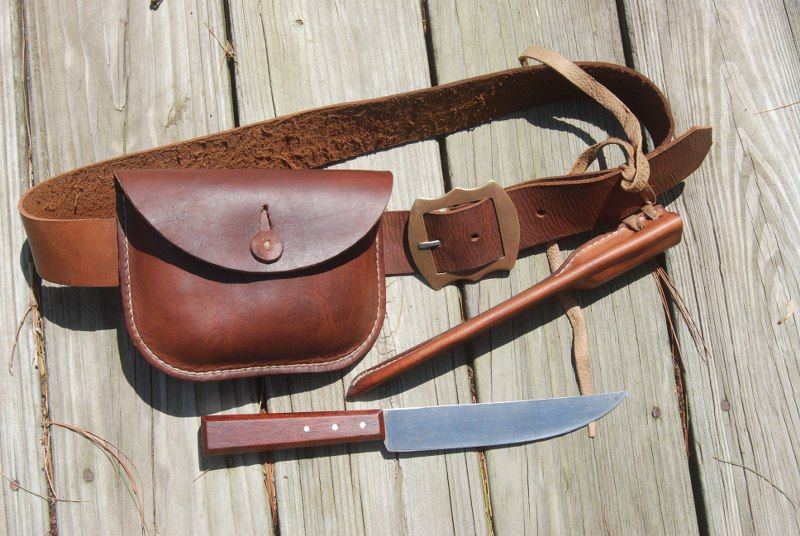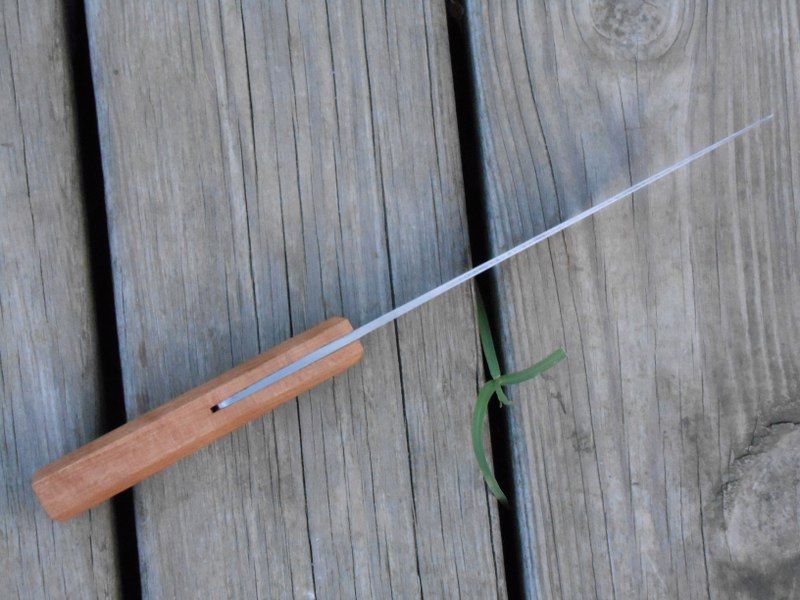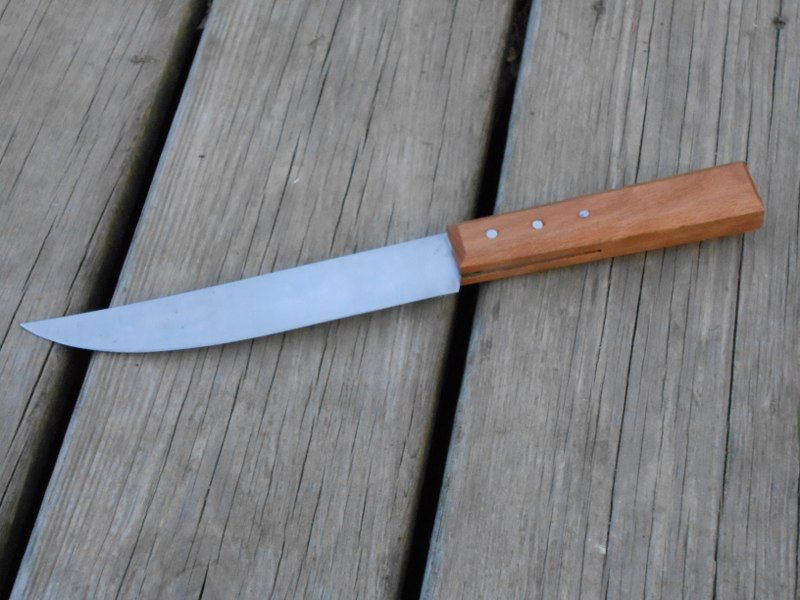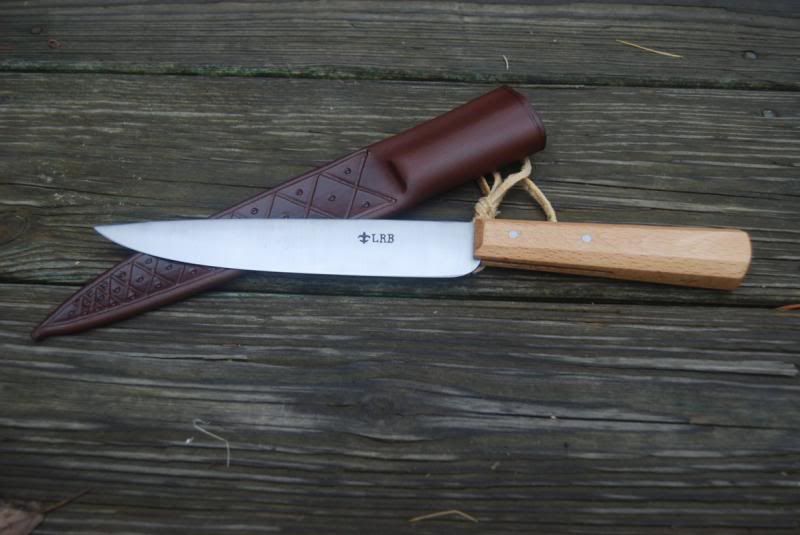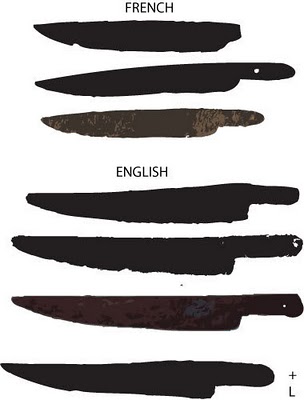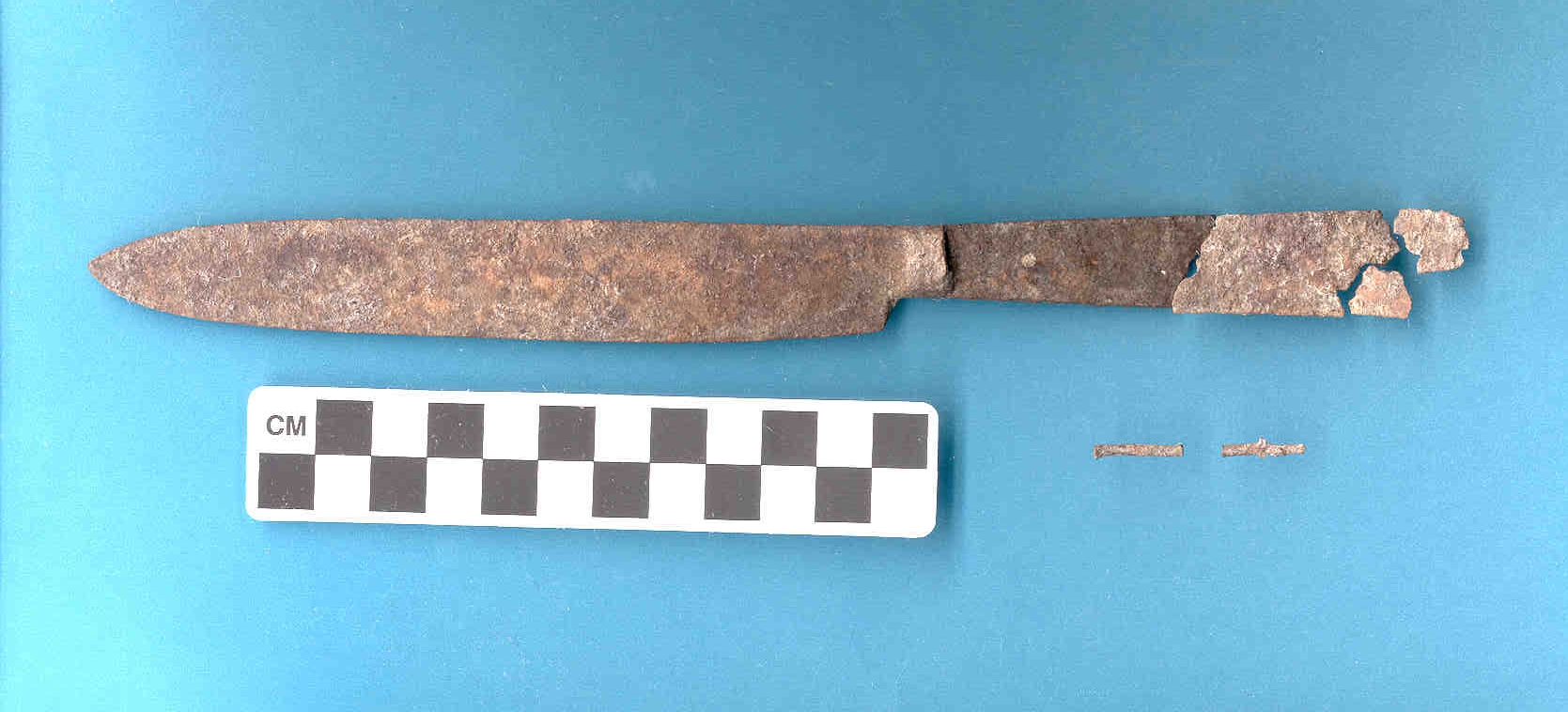People today can go to the sporting goods store and pick out any number of purpose-made "hunting knives", and often when they go to reenact the 18th century they think that they could have done the same thing then too. But that situation simply did not exist then. People that ran around in the woods were generally considered nuts, reprobates, and primitives. There was not much of a "hunting/camping accessories industry". That started to change, of course, and by the middle of the 19th century you could probably get almost anything imaginable, but that sort of thing was still in infancy in the mid 18th century. It took me a while to slowly come around to understanding that, though I still wonder at how they managed to get along with some of the stuff!
The butcher knives seem to have worked fine anyway. :grin:
"Table" and "Case" knives were also imported in large quantities, and they can make for a slightly more upscale "hunting knife". I forget where this knife was found...Great Lakes somewhere, I believe.
Forged bolsters, full tang, the works. Probably had horn or antler scales. Sometimes they had cast metal "pistol grip" handles. Generally not all that large in size, though.
And again, a lot of the cutting tasks were performed with regular old folding pocket knives, just like today (how many people carry an 8" belt knife around today, and everyone carries a pocketknife. Same thing 200 years ago). Many people today will field dress a deer with a folding knife, so a big fixed blade "hunting knife", though quite stylish, is not entirely necessary. I wish that more proper 18th century style folding knives were available today. There are some cheap Pakistani models sold by several vendors, and I haven't tried any of them yet, but I'm not too confident of their quality... of course they may be every bit as good as ones from 200 years ago. A few custom makers have produced a few authentic clasp knives, but since they're pretty complicated, they're not cheap. I would really like a mid 18th century Barlowe knife, myself. Antler handles. :wink: ... If anyone out there is making a Christmas list for me...

